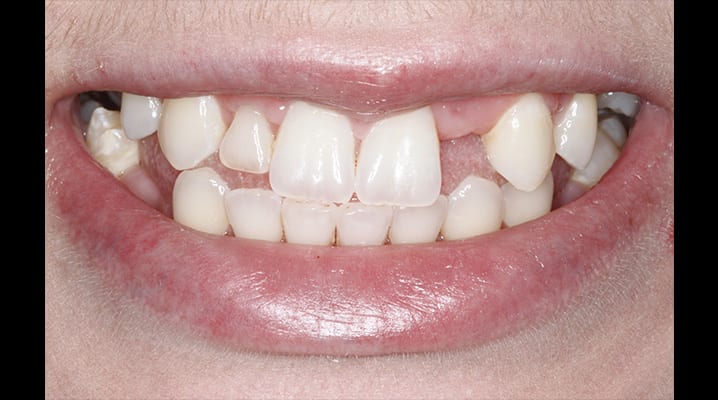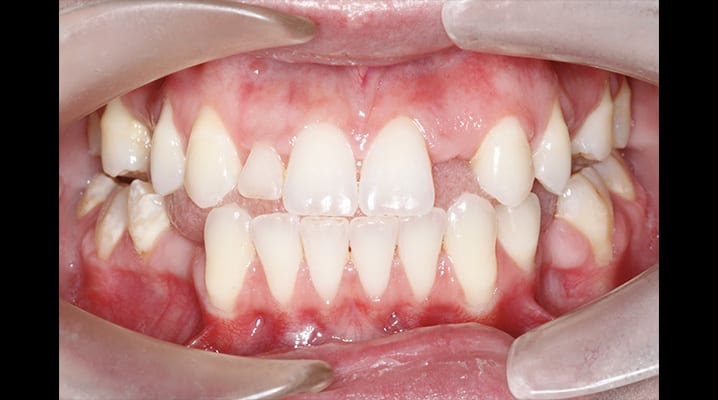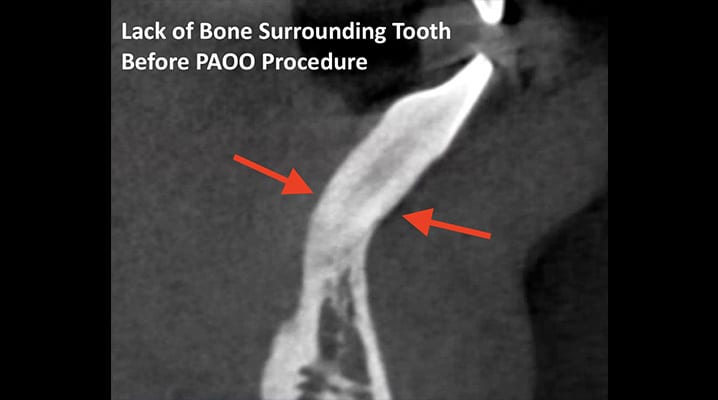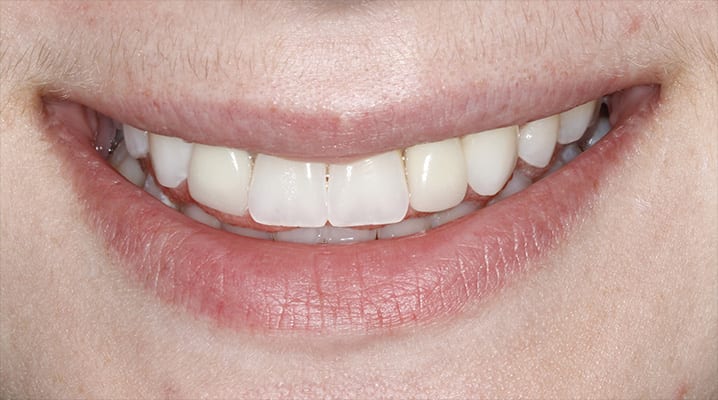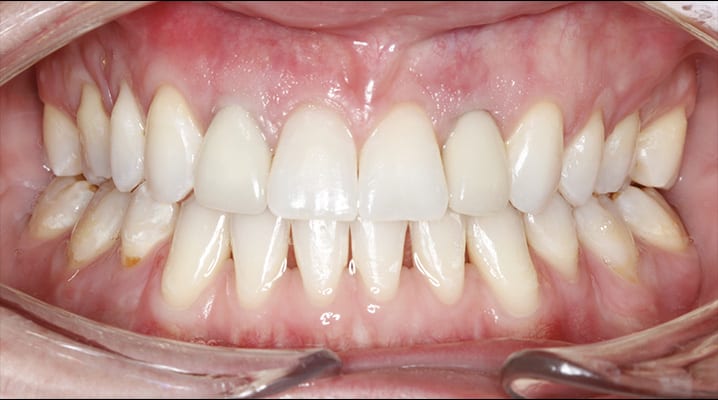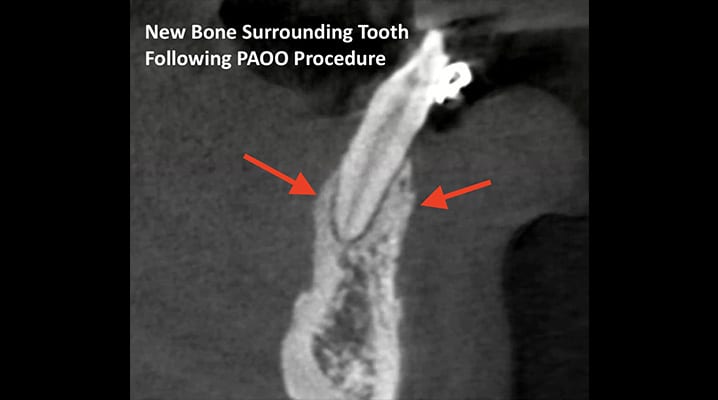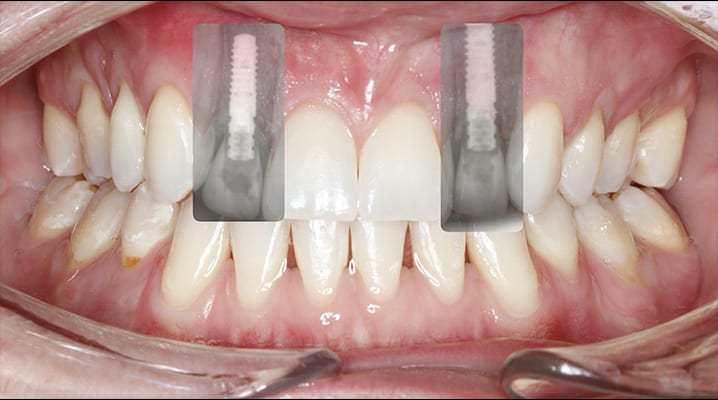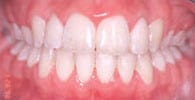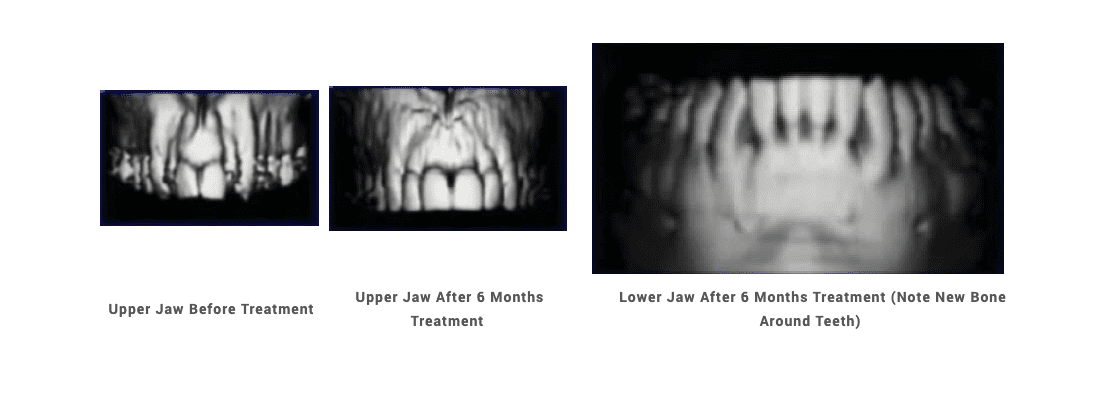To date, most major advances in orthodontics have been mechanical in nature. These advances increase the efficiency of the application of forces to the teeth. The PAOO procedure exploits the potential of the surrounding bone to respond to these forces. Combining the principals of bone biology involved in periodontal regeneration with those of orthodontic tooth movement, Drs. Thomas and William Wilcko developed a protocol that offers outstanding results 3 to 4 times faster than conventional orthodontics. Our doctors have trained with both Drs. Wilcko to learn the science and techniques of their protocol in order to implement Wilckodontics® here in the Tampa Bay area.
The Wilckodontics® system is feasible for most patients as long as their adult teeth are present. Teenagers or adults with professional or social obligations no longer have to decline needed treatment, this is the treatment they’ve been looking for!
A Wilckodontics® certified orthodontist works with our doctors to prepare your case for the rapid orthodontic treatment. Typically, your orthodontic appliances will be placed on the teeth and the orthodontist will consult with our doctors regarding which teeth are being moved and the direction of tooth movements anticipated. This information act as a blueprint for the procedures performed at our periodontal office. In most cases, utilizing sedation, a one-time minor type of periodontal plastic surgery is required where the bone is stimulated to allow the rapid movement of the teeth through it and bone graft materials are placed under the gum. Following its stimulation, the jawbone goes through a phase known as osteopenia, where its mineral content is temporarily decreased. Essentially, the bone becomes softer. While the bone is in this demineralized state, braces can move your teeth very quickly, because the bone is softer and there is less resistance to the forces of the braces. As the bone and bone graft re-mineralize, the bone graft provides extra bone support for the teeth to move into and provides additional stability of the teeth at the conclusion of treatment. This is not the case with conventional orthodontics. Because the movement of teeth is significantly more rapid than with conventional orthodontic therapy, checkups and adjustments at the orthodontist’s office occur approximately every 1 to 2 weeks as opposed to the 6-8 weeks between office visits usually suggested with traditional orthodontic treatment.
